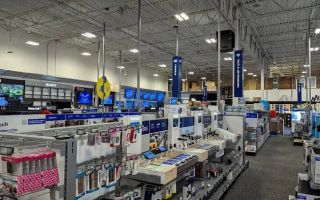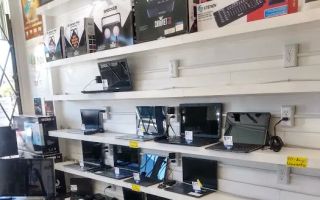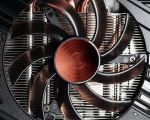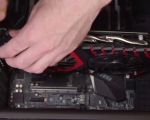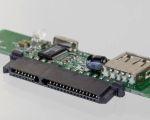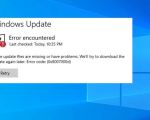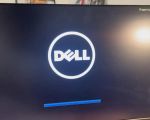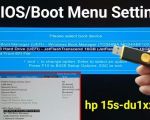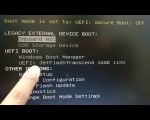How to Repair Your Computer Issues for Free - A Step-by-Step Guide
If you’re experiencing computer problems, the first instinct might be to call an expensive technician. However, did you know that many common computer issues can be easily fixed at home for free? In this guide, I’ll walk you through several steps to help you repair your computer issues without spending a dime. Whether your computer is running slow, facing connectivity issues, or experiencing software glitches, there are simple and effective solutions that can save you both time and money.

Best Buy
4210 Centerplace Dr, Greeley, CO 80634, USA
1. Identifying the Issue
The first step to fixing your computer is identifying the root cause of the problem. Take a moment to assess the issue you're facing. Some common problems include:
- Slow performance
- Frequent crashes or freezes
- Network connectivity issues
- Malware or virus infections
- Display or resolution issues
Once you have a better understanding of what’s going wrong, you can begin troubleshooting. Most problems have clear solutions that can be found with a little research and effort.
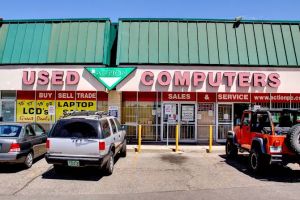
Action Computers Inc. -- Denver Location
2890 S Colorado Blvd F, Denver, CO 80222, USA
2. Running Built-In Diagnostic Tools
Many operating systems, like Windows and macOS, come with built-in diagnostic tools that can help you identify and fix issues without the need for third-party software or technicians. For example:
- Windows: Run the System File Checker (sfc) by typing “sfc /scannow” in the command prompt. This tool scans and repairs corrupted system files.
- macOS: Use the Disk Utility tool to check your disk for errors and repair them automatically.
These built-in tools can fix minor system issues and help boost your computer’s performance without any cost to you.
3. Updating Your Drivers and Software
Outdated drivers or software can cause a variety of problems, including poor performance and connectivity issues. Make sure all of your drivers and software are up-to-date. Here's how to do it for free:
- On Windows, go to the Device Manager and check for any outdated drivers. You can download the latest versions directly from the manufacturer's website.
- For macOS, go to the App Store and update your software to the latest version.
Updating your software and drivers ensures that your computer is running as efficiently as possible, and it can fix issues like crashes and lagging.
4. Clearing Cache and Temporary Files
Over time, your computer accumulates unnecessary cache files and temporary data that can slow it down. Clearing these files is a simple but effective way to improve performance. Here’s how:
- Windows: Use the Disk Cleanup tool to delete temporary files, system files, and other unneeded data.
- macOS: Clear cache files by going to Finder, selecting "Go" in the menu, and choosing "Go to Folder." Then type ~/Library/Caches and delete the files in that folder.
By removing unnecessary files, your computer will have more storage and run faster.
5. Scanning for Malware and Viruses
Malware and viruses can cause a wide range of issues, from slow performance to crashing programs. If you suspect that malware is the problem, here’s how to fix it:
- Windows: Use the built-in Windows Defender to run a full system scan for free.
- macOS: While macOS is less prone to viruses, you can still download free antivirus programs like Avast or Malwarebytes to scan for malware.
Running regular scans can protect your system from threats and keep it running smoothly.
6. Fixing Hardware Issues
Sometimes the issue may be hardware-related. If your computer isn’t turning on or experiencing other hardware issues, here are a few troubleshooting tips:
- Check that all cables are securely plugged in, especially the power cord.
- If your computer isn’t turning on, try holding the power button for 10-15 seconds to reset it.
- Clean the inside of your computer to remove dust, which can cause overheating and other issues.
These small maintenance tasks can prevent hardware problems and extend the life of your computer.
7. Seeking Additional Help
If you’ve tried all of the above methods and your computer is still acting up, it might be time to seek additional help. Many online forums, like Reddit and Tom's Hardware, have active communities of users who share advice and solutions. You can also check out video tutorials on YouTube to find step-by-step guides for fixing specific issues. And if you still need assistance, consider reaching out to a professional service like Computer Repair to get your computer fixed at an affordable rate.
By following these steps, you can resolve many common computer issues without having to spend money on expensive repairs. Take control of your computer’s health and enjoy a smoother, faster system. If you need more in-depth help or professional service, feel free to visit Computer Repair for the best solutions tailored to your needs.




